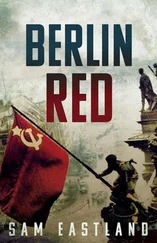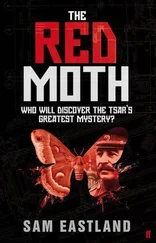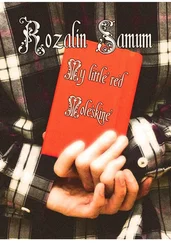Sam Eastland - Red Icon
Здесь есть возможность читать онлайн «Sam Eastland - Red Icon» весь текст электронной книги совершенно бесплатно (целиком полную версию без сокращений). В некоторых случаях можно слушать аудио, скачать через торрент в формате fb2 и присутствует краткое содержание. Год выпуска: 2014, ISBN: 2014, Издательство: Faber & Faber, Жанр: Исторический детектив, на английском языке. Описание произведения, (предисловие) а так же отзывы посетителей доступны на портале библиотеки ЛибКат.
- Название:Red Icon
- Автор:
- Издательство:Faber & Faber
- Жанр:
- Год:2014
- ISBN:9780571312313
- Рейтинг книги:3 / 5. Голосов: 1
-
Избранное:Добавить в избранное
- Отзывы:
-
Ваша оценка:
- 60
- 1
- 2
- 3
- 4
- 5
Red Icon: краткое содержание, описание и аннотация
Предлагаем к чтению аннотацию, описание, краткое содержание или предисловие (зависит от того, что написал сам автор книги «Red Icon»). Если вы не нашли необходимую информацию о книге — напишите в комментариях, мы постараемся отыскать её.
Red Icon — читать онлайн бесплатно полную книгу (весь текст) целиком
Ниже представлен текст книги, разбитый по страницам. Система сохранения места последней прочитанной страницы, позволяет с удобством читать онлайн бесплатно книгу «Red Icon», без необходимости каждый раз заново искать на чём Вы остановились. Поставьте закладку, и сможете в любой момент перейти на страницу, на которой закончили чтение.
Интервал:
Закладка:
‘So did we all,’ replied Pekkala.
Slowly Kutsov sank to his knees. ‘Do you mean to tell me that this has been hanging in my house the whole time I’ve been living here?’
‘That appears to be the case,’ said Kirov, as he reached in through the gap and carefully removed the icon.
Pekkala rested his hand upon Kutsov’s shoulder. ‘Someone will come to fix the damage,’ he said.
When the two men walked out of the room, Kutsov was still fixated upon the crater in his wall, as if at any moment, more treasures might tumble from the dusty gloom.
‘How did you know?’ asked Kirov, as they walked down to the street.
‘Back in Ahlborn,’ said Pekkala, ‘when you told me it was just a painting, I remembered that I’d heard those words before.’
‘From whom?’
‘Rasputin,’ answered Pekkala. ‘On the day the icon was reported stolen, I came to this house and he told me to abandon my search. He warned me how dangerous it would be if I continued the investigation. Grigori was right, but he was trying to tell me something else as well. When he said it was only a painting, I thought that sounded strange coming from a man as devout as Rasputin. What I didn’t understand until you spoke those words again was that he meant it literally.’
‘Then the thing Stefan Kohl was chasing all this time . . .’
‘Was a forgery, and, whoever did the work,’ said Pekkala, ‘the Tsarina must have known about it, as well as where the original was stashed. After all, she was the one who ordered the wall to be painted, which must have been to cover up the damage they had caused when hiding it.’
‘Why leave it at Rasputin’s?’ asked Kirov.
‘Because that is the one place she thought no one would look,’ replied Pekkala. ‘And when the people of Russia had finally resigned themselves to the fact that The Shepherd was gone, the Tsarina would spirit it back to its hiding place in their own Church of the Resurrection. You see, Kirov, although she believed in its power, she never had any intention of sharing that power with the world.’
‘But the forgery was perfect,’ remarked Kirov. ‘Even Semykin, the Kremlin’s own authenticator, was convinced. Is there no way to find out who painted it?’
‘Under different circumstances, I would probably say no,’ Pekkala told him. ‘A forger this accomplished would be well acquainted in the art of covering his tracks. However, the same is not always true of his employers and, in this case, I think I might know where to find the answer.’
28 March 1945
Moscow
Outside the battered metal door of Archive 17, Pekkala stood in the rain.
He had knocked several times, but there was no response. And yet he could see through the transom windows at the top of the wall, that the lights were on inside. Someone was there, and he knew that someone was Vosnovsky.
He turned up the collar of his coat as a cold breeze swept along the empty street, ripping the puddles like stucco.
With a low growl, he stepped up to the door and pounded on it once again.
Nothing.
‘Vosnovsky!’ he shouted. ‘Open this wretched door!’
But his only reply was the wind, moaning through the broken windows of the abandoned warehouse across the street.
Pekkala paced out into the road, picked up one of the stones which had previously been hurled at the archive and prepared to pitch it at the door. But then he thought better of it and dropped the stone. Instead, he breathed in deeply and began to sing.
He belted out a piece from Rimsky-Korsakov’s Legend of the Invisible City of Kitezh and the Maiden Fevroniya , in which a woman who is lost in the wilderness of the Kerzhenskii woods dreams that she has awoken in paradise. In February of 1907, Pekkala had accompanied the Tsar to the opera’s premiere at the Mariinsky Theatre in St Petersburg. He did not want to go but the Tsar had insisted.
‘Pekkala, my wonderful savage,’ said the Tsar, ‘it is time we civilised you just a little.’
It was Pekkala’s first time at the opera. Although his seat was too small, the music too loud for his taste and he felt overwhelmed to be packed in with so many people, he did enjoy the evening, even in spite of himself.
The song of the Kerzhenskii woods had tattooed itself into Pekkala’s mind, as the songs from his childhood had done, and he sang it as best he could, which was not particularly well.
The reason Pekkala bothered at all was that he had suddenly remembered the way Vosnovsky, in his previous incarnation as conductor on the Imperial Russian Railway line between Petersburg and Tsarskoye Selo, had sung operas while marching up and down the aisle of the rattly little train of which he was inordinately proud.
Pekkala had not been yowling long before the door to the Archive suddenly flew open and there stood Vosnovsky, eyes wide in astonishment. ‘Rimsky-Korsakov!’ he shouted.
‘Actually,’ said Pekkala, ‘it’s me.’
‘Good God!’ exclaimed Vosnovsky. ‘Don’t stand there in the rain. Come in!’
Inside the Archive building, Vosnovsky spread his arms to take in the hundreds of filing cabinets. ‘Just say a name, Inspector!’
‘Detlev,’ answered Pekkala. ‘If he’s in here, he should be in one of the old Okhrana files.’
Vosnovsky turned sharply and strode away down one of the cabinet-lined avenues. ‘Okhrana!’ he said. And then he said it again, and again, and before long he was singing the word in a voice that echoed through the rafters of the Archive.
Once more, Pekkala recalled the proud conductor of the Petrograd-to-Tsarskoye train line, a double row of silver buttons shining on his dark blue tunic, bellowing out arias as he strode up and down the aisles of the carriage.
Then Vosnovsky came to an abrupt halt. ‘Here!’ he announced. ‘D. Detlev.’ He slid out one of the file drawers and walked his fingers across the brittle, dog-eared ranks of files. Smartly, he yanked out an envelope and was just about to hand it to Pekkala when the satisfied expression on his face suddenly faltered. The envelope rose and fell as he weighed in in his hand. ‘There’s something wrong,’ he said.
‘It’s empty,’ remarked Pekkala.
‘Why, yes,’ agreed Vosnovsky. ‘It almost sounds as if you knew already.’
Pekkala nodded wearily. ‘I thought there was a chance that the contents might have found their way home.’
Confused, Vosnovsky looked back into the crammed contents of the file drawer. ‘Well, Inspector, unless you know who might have taken it, I’m afraid there is very little chance . . .’
Vosnovsky’s words snagged like a fish hook in Pekkala’s brain. ‘We could try the Blue File,’ he said.
Vosnovsky turned to him, startled. ‘The Blue File!’ he echoed in a whisper. ‘No one has asked to see that in a very long time, and if the request were coming from anyone other than you, Inspector, I can assure you that request would be denied.’
The Blue File was one of the most secret collections of documents in all of Russia. It had been compiled by the Tsar, and contained lists of agents whose identities had never been revealed. Code names were used, and the names of the men to which they had been assigned were known only to the Tsar himself. These included not only top-level Okhrana operatives on special missions for the Tsar, but also spies who had been tasked to infiltrate their own secret service, as well as to perform other duties the Tsar considered too sensitive to reveal even to his closest and most trusted confidants.
After the Tsar and his family had been banished from Tsarskoye Selo, beginning the long journey which would ultimately end with their murders in the far-away city of Ekaterinburg, the file was discovered in a secret compartment of a desk in the Tsar’s study by agents of the newly formed Bolshevik Secret Service. It became known as the Blue File because all entries had been made in blue pencil in the Tsar’s own hand.
Читать дальшеИнтервал:
Закладка:
Похожие книги на «Red Icon»
Представляем Вашему вниманию похожие книги на «Red Icon» списком для выбора. Мы отобрали схожую по названию и смыслу литературу в надежде предоставить читателям больше вариантов отыскать новые, интересные, ещё непрочитанные произведения.
Обсуждение, отзывы о книге «Red Icon» и просто собственные мнения читателей. Оставьте ваши комментарии, напишите, что Вы думаете о произведении, его смысле или главных героях. Укажите что конкретно понравилось, а что нет, и почему Вы так считаете.










